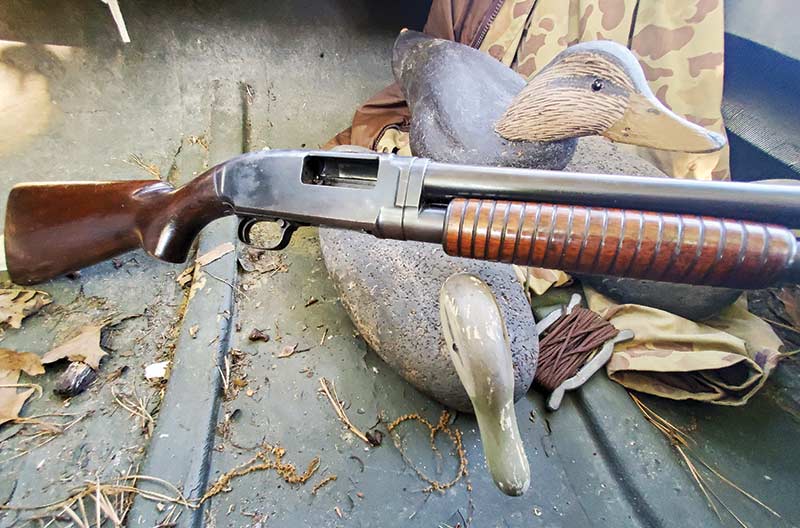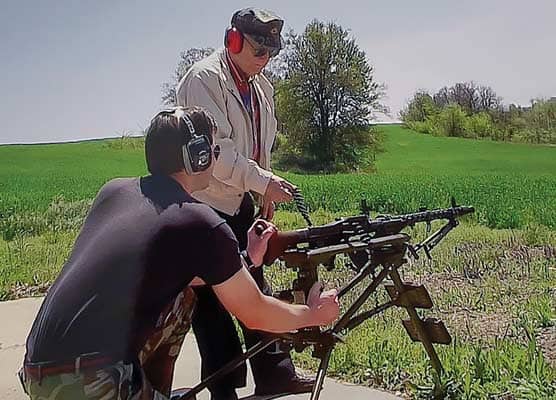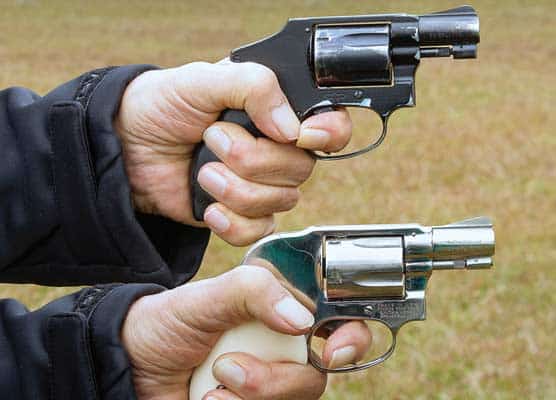Winchester Models 1897 and 12
Prime The Pump
Call ’em what you want — a pump, a slide-action repeater, a corn shucker — the pump-action shotgun has a slot in so many gun cabinets. Their multi-shell magazine made pumps a pleasant option to the two-shot side-by-side. And though there were a few early pump shotguns, two Winchesters — the Model 1897 and its successor the Model 12 — created the commercial success envied by all others.
Swat The Blighter!
The pump shotgun nearly got its start across the pond. Alexander Bain, a British gunsmith, received a patent for the first slide-action shotgun in 1847. Only one was made, making the concept a commercial flop. Later on in 1882, Christan Miner Spencer, an American, tried his hand at pumps in the Spencer Arms Company located in Windsor, Conn. Spencer had experience with repeaters as he produced the Spencer rifle, which gained fame as a military-issued Civil War firearm. The U.S. Government purchased some Spencer pumps for use by prison guards. In 1889, the Spencer Arms Company went bankrupt and was sold to the F. Bannerman Manufacturing Company in New York. Some 9,000 were made before they, too, were discontinued.
The cost associated with the complexity of building a pump-action shotgun ultimately was solved by John Browning for Winchester in New Haven, Conn. According to Danny Michael, the Curator of the Cody Firearms Museum, “Pump shotguns represented a new action for both shooters and hunters alike. When we look at the origin of the pump we typically combine Winchester’s Model 1893 and the Model 1897. John Browning designed both and relied on the concept that a sliding forearm would remove a spent shell from the chamber, discard it through an ejection port, and use a tilting breechblock to load a new shell when the forearm was slid forward. When the forearm was returned completely forward the shotgun was ready for discharge. The Model 1897 had a 2 9/16″ chamber, was designed for low compression paper shells, had an external hammer, and held six shells in the tubular magazine that ran nearly the entire length of the barrel. Over 1 million shotguns were sold between 1897 and 1957. Compared to a two-shot side-by-side, the pump was a thoroughly innovative and modern firearm.”
Nothing spurs on innovation than competition and boy did it come fast. Savage Arms introduced their eponymous Model 1904 in the same year and four years later Remington climbed aboard the pump gun train with the release of their Model 1908. Winchester’s dominance was threatened and to maintain their position they needed a firearm to capture the hearts of sportsmen nationwide. They came up with one four years later in 1912.
Cleaning It Up
If the problem of creation of a commercially viable pump-action shotgun was solved by Browning, then it was perfected by another of Winchester’s legendary engineers, Thomas Crosley Johnson. Working with a focus on reliability, shootability and capacity, Johnson’s design included a streamlined solid-steel machined receiver that enclosed the bolt during the entire ejecting/reloading/firing cycle. Johnson used an inertia-action side lock, which meant the dropped hammer partially unlocked the bolt and the shotgun’s recoil further completed the action.
As the forearm was pulled back, an action bar cam pulled down the bolt, cocked the internal hammer and removed and ejected the spent shell. The next shell in the magazine moved forward. As the forearm moved forward, the shell lifter raised and chambered the new shell. If a shot wasn’t fired the shooter could eject a shell by pushing the forearm forward to release the slide.
The tubular magazine held six folded-crimp shells and five rolled-crimp shells. Shells loaded from the bottom meant the shooter didn’t have to take the shotgun from his shoulder to reload. The first loaded shell depressed the shell lifter before the round was inserted into the magazine, which made for an easy process. Some barrels were made from Damascus steel but the majority were fluid steel.
Takedown
Johnson’s pump was a take-down model that could be easily disassembled for cleaning. The ease of cleaning contributed to the shotgun’s reliability and made it a military and law enforcement fixture. “The Model 12 was used in World War I, World War II, Korea, and early Vietnam,” Michael said. “The Trench Gun model had a shorter barrel, a vented heat shield, and a bayonet adapter. In World War II, the U.S. Government purchased about 80,000 Model 12s. The United States Marine Corps used many of them in the Pacific Theater,” he noted.
The Riot Gun version had a short, 20″ barrel and was favored by domestic police forces. One reason military and police detachments favored the Model 12 was because it had no trigger disconnector. If the trigger was depressed and held while the slide was moved back and forward, the shotgun would slam fire. This feature made it excellent for close combat situations.
From its launch in August 1912 through its final production in May 1964, the Model 12 enjoyed 52 brilliant years. Over 2 million shotguns were sold during its years of production, enough for Winchester to enjoy market domination. The Model 12 soon would be challenged by two other pumps, the Remington 870, which debuted in 1950, and the Mossberg Model 500, which arrived in 1961.
It would be upstaged, too, for the Mossberg Model 500 had the highest commercial success with 12 million shotguns being sold. The Remington 870 wasn’t far behind with a robust 11 million models sold. Those are impressive numbers, ones which came about from Winchester solving the pump-action puzzle with their Models 1897 and 12.







